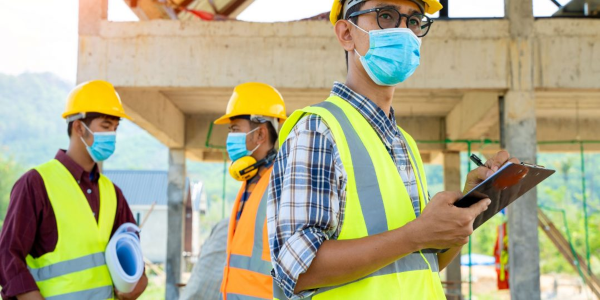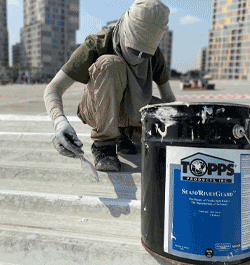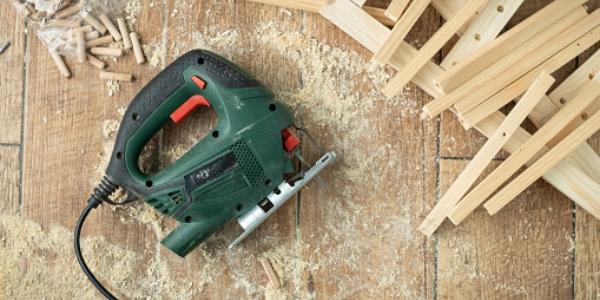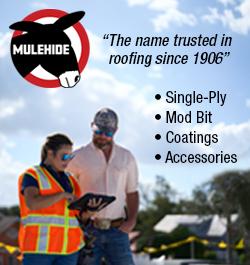UP TO THE MINUTE
Staying Safe Out in the Field

By Matt Gibson, CertainTeed.
With construction reopening, it’s important for workers to have the appropriate supplies and information to keep themselves safe.
Construction projects have been starting up again as restrictions due to the COVID-19 pandemic have been eased. Although there is no vaccine for the coronavirus yet, outside salespeople and other representatives are returning to the field. It is important for these workers to have the necessary supplies to keep themselves and those around them safe.
While each work situation may differ, there are some general COVID-19 safety practices recommended by the Centers for Disease Control (CDC) that are applicable in all circumstances. Additionally, the Occupational Safety and Health Administration (OSHA) has created guidelines specifically for the construction workforce.
Close personal contact – new rules apply
Most everyone is now familiar with the six-foot distancing rule: to help lessen the chance of spreading infection, individuals should maintain six feet between themselves and other people. Grocery stores and other retail outlets are using directional floor signs to help “space” customers, but these applications are not practical for construction sites. A good rule of thumb when in the field is to try to maintain two arms’ length from others, which is roughly equivalent to six feet.
However, when it comes to handshakes – one of the most natural forms of contact for business people – standing six feet apart is an impossible feat. As we adapt to new norms, consider using other gestures that will compensate for traditional greetings like waving or a thumbs-up.
Initiate the non-verbal greeting with the person you are meeting; there is a good chance they will automatically mimic your greeting. Should someone extend a hand to you, defuse an awkward situation with humility and light-heartedly explain that the coronavirus has forced this odd new norm.
Speaking about hands…
One of the many concerns about the COVID-19 virus is how easily it spreads, even by those not displaying symptoms. Handwashing has always been a mundane, but necessary hygiene practice. In this pandemic-driven world, keeping your hands clean may well be the difference between staying healthy or falling ill from the virus.
Hands should be washed as often as possible, including after visiting any public place where surface items have been touched. In normal times, most people would not worry about washing their hands after filling up at a gas station or opening a door. Today, though, this is an essential practice.
The CDC has issued guidelines to help teach proper hand washing techniques to avoid infection. The proper way to wash hands when using soap and water includes lathering hands (front, back, and between fingers) by rubbing them together for 20 seconds. (Hint: singing or humming the Happy Birthday song twice from start to finish will take about 20 seconds.) Once your hands are washed and rinsed, air dry them or use a clean towel.
When in the field, soap and water may not be available, so hand sanitizer can be used instead. The CDC recommends using an alcohol-based sanitizer that contains at least 60 percent alcohol. Apply the gel to one hand and then rub both hands together. Like washing with soap and water, make sure to cover all areas of the hands and massage for 20 seconds.
Door handles excel at spreading germs. Therefore, when possible, use a tissue or paper towel to grab the handle, then discard it. Anti-germ tools are a great item to keep in your car or bag – they are inexpensive and can be easily purchased online. Like a pocket knife for virus protection, these innovative tools can be used to open doors, or on keypads, sinks and elevator buttons.
Disposable gloves can also be used to protect hands from germs. However, keep in mind that – to be effective – gloves must be taken off correctly and then disposed of properly.
Face masks and goggles
In April 2020, the CDC issued a recommendation that non-surgical face masks should be worn when in public to protect from the unintentional spread of germs.
In the short-term, you should avoid purchasing surgical masks or N-95 respirators, as these masks are in short supply and are needed by frontline healthcare workers and first responders. Non-surgical face masks can be purchased relatively easily from retail outlets (even beauty supply shops) and online.
Homemade face coverings are also deemed effective and can be made easily. Facemasks should never be used by children under the age of two, nor by anyone who has trouble breathing or who may not be able to remove the mask themselves.
Keeping surfaces safe
The COVID-19 virus is capable of living on surfaces for an extended period of time. This is why it is critical to keep surfaces like steering wheels, stick shifts, tablets, laptops and other surfaces germ-free. The CDC has advised the use of alcohol-based wipes or spray that contains 70 percent alcohol or more.
When cleaning larger areas, wear protective gloves and a gown or apron, if possible. If unable to wear a protective covering, after cleaning immediately, remove clothing and launder. While surgical or medical gowns should be saved for healthcare personnel, sufficient substitutions are available. Reusable gowns and gloves should be laundered based upon the manufacturer’s directions.
Temperature checks
Before heading out to the field, check your temperature. Thermometers are inexpensive and readily available. Based on personal preference, there are several ways to check for a fever. The CDC considers a person to have a fever when body temperature reaches 100.4°F or above. If you have a fever, cancel all appointments and stay home.
The CDC advises seeing a doctor when a temperature higher than 101°F lasts for more than two days. If your fever spikes over 103°F, you should immediately see a doctor or visit an urgent care clinic.
Go forth and sell
With the right safety supplies and a few adjustments to cleanliness routines, we can all do our part to keep COVID-19 at bay. Once the pandemic passes, more rigorous sanitary practices may become mainstream practice. The good news is – if these practices are put into place now, they will soon become second nature.
Learn more about CertainTeed in their RoofersCoffeeShop Directory.
Original article source: CertainTeed




















Comments
Leave a Reply
Have an account? Login to leave a comment!
Sign In